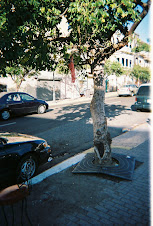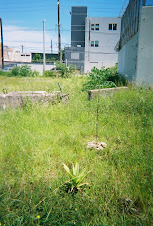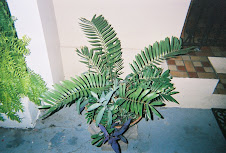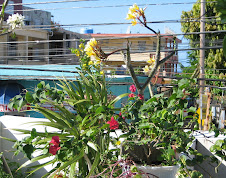ALTHOUGH THE vast majority of plants manufacture their own food supplies by
a process called photosynthesis, mushrooms, molds and other fungi-- which some
biologists include in the Plant Kindom--rely on foods created by green plants for their sustenance, as do animals. Most plants spend a lifetime anchored in one place, yet a few simple, one-celled forms are capable of swimming to different locations in the
waters they inhabit.
IT is this kind of diversity and amazing variety of shapes, colors and lifestyles that
continually excite our interest in these organisms called plants.
As we delve into the science of botany, we shall largely be concerned with the two groups of plants with which we as gardeners, most often work. One, known as the
flowering plants or Angiosperms, is the largest group in the Plant Kingdom and
consist of about 250,000 species. The name "Angiosperm" refers to the fact that
seeds from these plants are formed inside containers that we call fruits (Greek:
angeion, vessel; sperma, seed). The flowering plants most often decorate our homes
and landscapes, supply almost all of the vegetable matter in our diets, and the source
of of the world's hardwoods. They are the most sophisticated of plant forms and are
best adapted to survive in a wide range of climates and places.
Second are Gymnosperms, plants that produce seeds in the open spaces of cones--between the flaplike parts that make up a pine cone, for example. The Greek words
gymnos, "naked" amd sperma "seed" describe this form of development. On the evolutionary scale, Gymnosperms are more primitive than Angiosperms but are of
considerable economic importance as well as interest to landscapers for their compact forms and richly-colored, needle-shaped or scalelike leaves. Softwoods
such as pine and fir are not only used to make products called naval stores--pitch,
turpentine and rosin. The cypress, fir and pine, are the largest living things on earth, the giant sequoias. Many ornamental shrubs, including varieties of
Chamaecyparis (False Cypress) amd Thuja occidentalis (American Arborvitae) are
members of this group and least typical of Gymnosperms, Cycads and the beautiful
Maidenhair tree, Ginkgo biloba, a broadleaved species.
All the information above: Botany for Gardeners, by Brian Capon, Timber Press, 1990. Introduction, page 13.
Epilogue: As I start getting tired, I will get back to basics, botany, propagation, maintenance. I am not made to be the water drop hitting the rock, or going
over the top, smoothing the rough surface.
One advice to self proclaimed environmentalists, mostly at the keyboard bandwagon; picking up garbage twice a year in the depths of the Atlantic, shores anywhere, does not make any juan an environmentalist.
Go clean El Canho Martin Penha, stop environmental elitism. Start studying it; ecology, botany, environmental issues, move away from your little niche. Put the puzzle together, in focus, perspective instead of preaching at random impulse, without substance as in target practice.
sábado, 27 de junio de 2009
Suscribirse a:
Enviar comentarios (Atom)


















-25.jpg)
-24.jpg)




































-22.jpg)
-25.jpg)
-24.jpg)






-16.jpg)
-13.jpg)
-08.jpg)

















































No hay comentarios:
Publicar un comentario